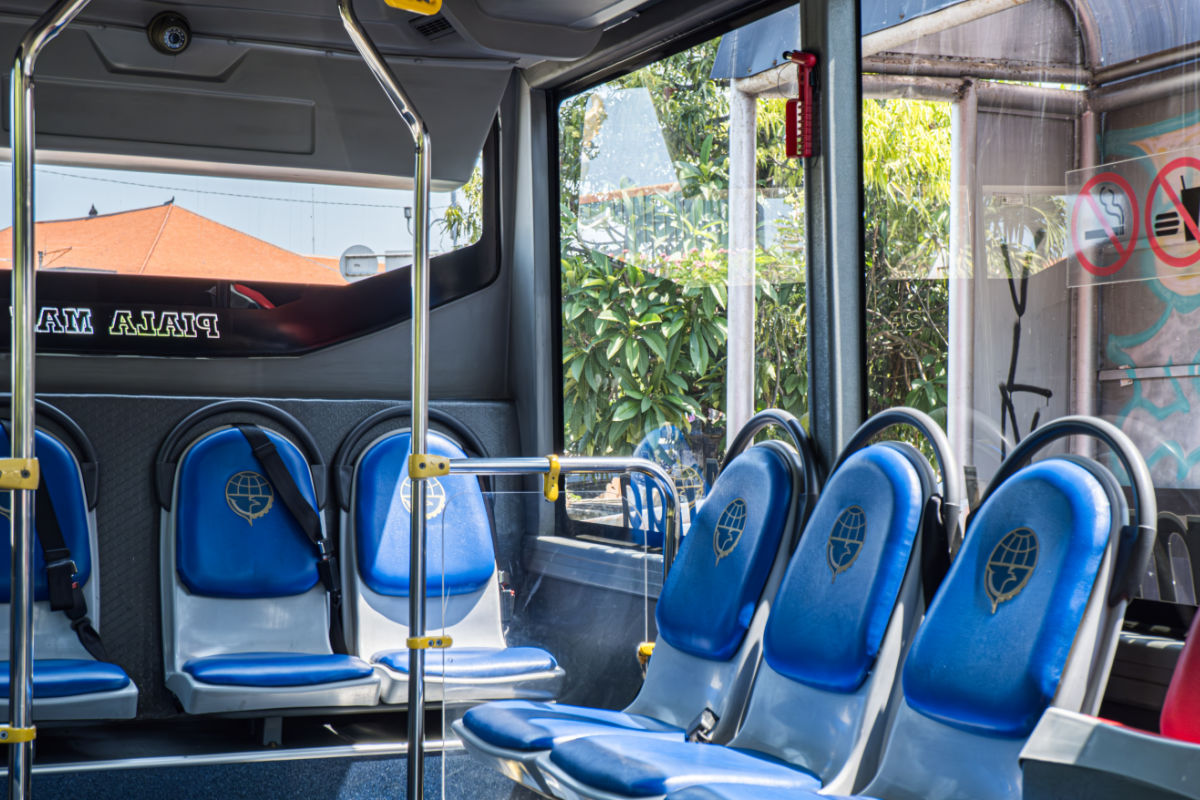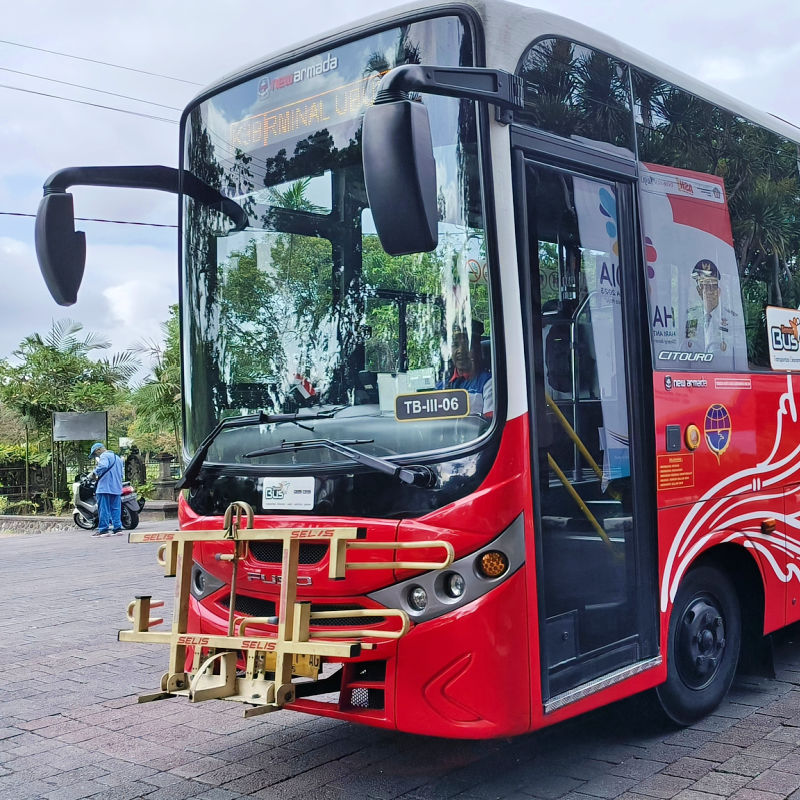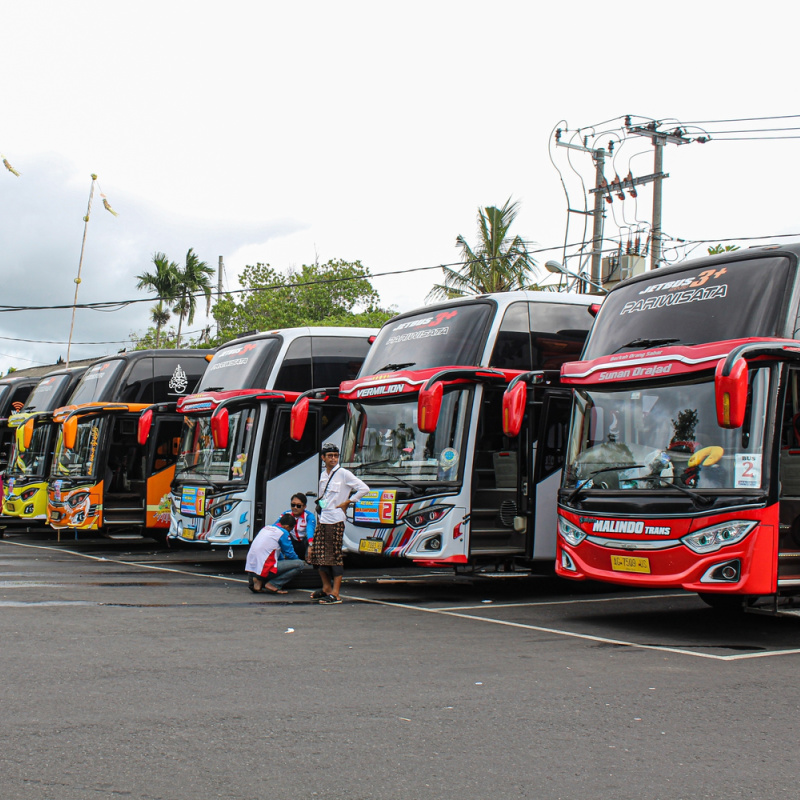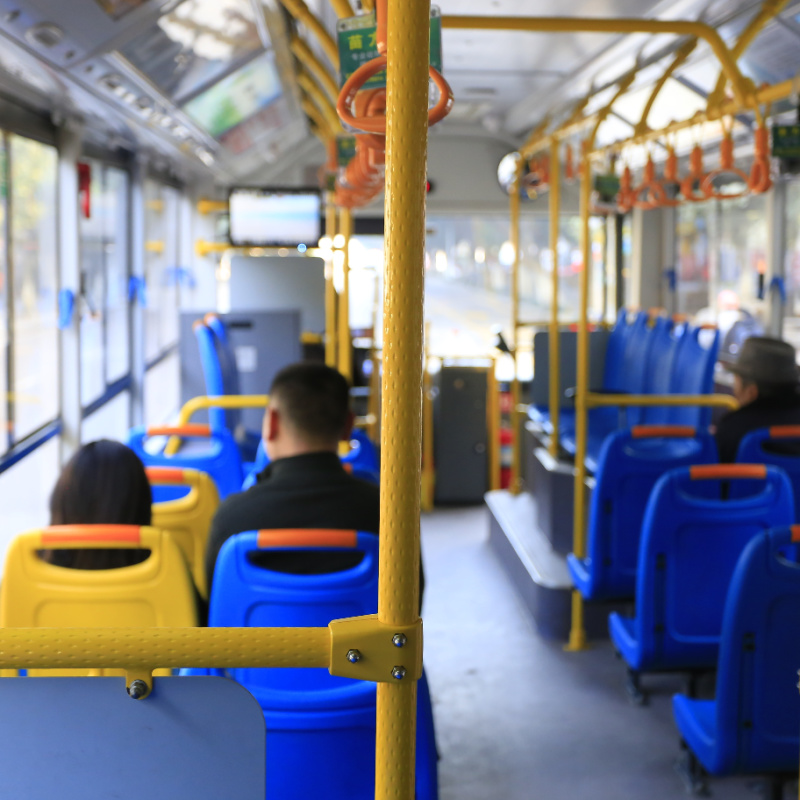Bali’s new shuttle bus service in Sanur is making holiday travel so much easier for tourists. The service that was initially on trial and has now become a permanent service, is serving up to 1,000 tourists per day.

The electric shuttle bus service now operating around Sanur is being used and increasingly appreciated by international tourists, domestic tourists, and even local community members. October has seen a huge surge in passengers, despite the low season starting to come into effect.
As more people learn about the service, the bus is expected to become an increasingly popular choice for navigating around Sanur.
Most passengers say they use the Sanur shuttle bus to avoid traffic jams in the area. While Sanur is generally a quiet and laid-back tourism resort, traffic is a big problem on the roads that feed into the resort area.
This long-standing issue is on the to-do list for local leaders to resolve, but since significant infrastructural changes to the road network are needed to create impactful and sustainable solutions, the traffic jams will be sticking around a little longer.
Nevertheless, work to resolve the traffic issues and provide tourists with easier ways to navigate in and around Sanur is underway. In addition to the Sanur shuttle bus service, a new pedestrian route is being constructed in the Jalan Danau Tamblingan Sanur area.
The beachfront areas in Sanur are among the most pedestrian-friendly on the island. However, the tourist village itself is notoriously tricky to navigate safely on foot. The new pedestrian access will make it easier and safer for tourists to explore the area on foot.
Though the Sanur shuttle bus is proving to be such a hit with tourists, it will soon become difficult to encourage tourists to walk! Data from the Denpasar Transportation Agency shows that up to 1,000 people per day are using the service. A spokesman from the Denpasar Transportation Agency told reporters, “The average passenger response is quite positive. Every month, these electric vehicles carry 18,630 passengers. Tourists are even willing to wait longer than getting stuck in traffic.”
Currently, the Sanur shuttle bus route is serviced by six electric buses, and in mid-November, a further six will be added to the fleet. The shuttle bus service currently operates from 6 am to 10 pm, with the last service setting off on the route at 9 pm.
The current route starts at Sanur Tourism Junior High School (SMP), stops at Sanur Sindu Market, Icon Mall, and the Public Electric Vehicle Charging Station (SPKLU) at Lake Poso, and then continues onward to Mertasari Beach Parking. Tourists can ask local tourism staff for the nearest stop, as formal bus stops are still under development.

As the Sanur shuttle bus service is soaring in popularity, issues with the Trans Metro Dewata bus service are hitting local headlines once again. Local political leaders are calling for the Trans Metro Dewata bus service route that operates to and from Bali’s I Gusti Ngurah Rai International Airport to be scrapped, deeming that it is taking work away from local taxi drivers and is underused by the public.
Local polician Komang Wirawan told reporters, “The Trans Metro Dewata bus service to and from Ngurah Rai Airport should be stopped because it’s underutilized by the general public.” Wirawan claimed that in speaking to local stakeholders, there were feelings that the bus service was taking away potential earning opportunities from local drivers.

He noted “It would be better to maximize the route from Denpasar to the Udayana Bukit Jimbaran Campus, as this way the impact can be felt more,” Adding “Excess operational funds can be diverted to purchasing garbage trucks and paying drivers, building fire stations every 2 km, and providing or procuring ambulances to patrol the area to promptly respond to traffic accidents and other incidents.”
Speaking in response the Trans Metro Dewata Manager Ida Bagus Eka Budi told reporters “We don’t record the number of users from the tourist side, if they (the Regional People’s Representative Council) should understand the service concept, TMD Bus is not a competitor for tourism transportation businesses.”
Noting “In Indonesia, there are no regulations that differentiate fares for residents and tourists on urban mass transportation, so anyone can ride without discrimination.”

He confirmed that the Trans Metro Dewata bus routes are being adequately utilized by the general public to warrant keeping the services open and operational. He shared, “Corridor II to and from I Gusti Ngurah Rai Airport alone had 31,112 passengers in September 2025, almost the same as the Pesiapan Terminal and Bali State Polytechnic routes, or campus routes.”
Budi concluded, “The daily average for all corridors is 4,500 passengers. The airport route has been stable for the past two months, with daily passenger numbers at 1,000 people per day. Meanwhile, the Ubud Monkey Forest route has been higher every weekend, reaching 900 people per weekend.”
Remove All Ads & Unlock All Articles… Sign up for The Bali Sun Premium

Plan Your Bali Holiday:
Book The Best English Speaking Drivers For Airport Transfers & Tours
Choose From Thousands of Bali Hotels, Resorts, and Hostels with Free Cancellation On Most Properties
Book Cheap Flights To Bali
Don’t Forget Travel Insurance That Covers Medical Expenses In Bali
For the latest Bali News & Debate Join our Facebook Community
SUBSCRIBE TO NEW POSTS
Enter your email address to subscribe to The Bali Sun’s latest breaking news, straight to your inbox.
Discover more from The Bali Sun
Subscribe to get the latest posts sent to your email.

Frans
Wednesday 22nd of October 2025
Maybe it's time people started to accept what freedom of choice means. If people want to take a bus they are entitled to take a bus.
Besides, if the bus route is underutilised, how much business can it be taking away from other transport services like gojek? Perhaps local political leaders should think about what they say. I don't recall them crying about the original taxi services losing money when gojek and grab started. They just had to suck it up and find ways of being more competitive.
I support this bus service and encourage it to be marketed far more aggressively. The more it is used, the more it can expand further.